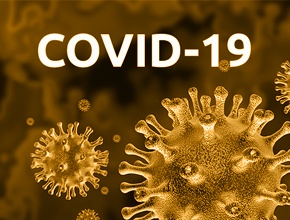Internal Medicine Rapid Refreshers is a series of concise information-packed videos refreshing your knowledge on key medical issues that general practitioners may encounter in their daily practice. This episode discusses non–ST-segment elevation acute coronary syndrome.
Contents
Useful links
- Chapter on acute coronary syndrome (ACS) from the McMaster Textbook of Internal Medicine
- Podcast on acute coronary syndromes from The Intern at Work
- GRACE ACS Risk and Mortality Calculator at mdcalc.com
Transcript
Introduction
Hi, my name is Shaan Gupta and I’m a senior medical resident in internal medicine at McMaster University. In this video we will go through a practical approach to the identification, risk stratification, and management of non–ST-segment elevation acute coronary syndrome (NSTE-ACS). This Rapid Refresher is intended for subspecialty physicians who are returning to the general internal medicine service during the coronavirus disease 2019 (COVID-19) pandemic.
Definitions
Acute coronary syndrome (ACS) is a clinical syndrome of acute chest pain related to myocardial ischemia. ACS is subclassified by electrographic (ECG) findings and cardiac markers into unstable angina, non–ST-segment elevation myocardial infarction (NSTEMI), and ST-segment elevation myocardial infarction (STEMI).
In this video we will be focusing on the management of unstable angina and NSTEMI. Both are characterized by chest pain with ECG changes, although only NSTEMI will have an elevated troponin level. Management is largely the same in both cases.
Diagnosis
Diagnosis is based on the presence of cardiac chest pain, ECG changes such as ST depression and T-wave inversions, and elevated cardiac biomarkers such as troponin. However, it is important to recognize that ECGs are normal in 30% to 50% of patients presenting with NSTE-ACS. Suspicion for ACS should be increased in patients with cardiac risk factors.
Note that if you see ST depressions in the anterior leads, remember to order a 15-lead ECG, as there may be a concealed posterior STEMI, which would require prompt revascularization.
Further investigations
Additional investigations are directed at identifying other etiologies of chest pain and shortness of breath, which are common presenting complaints in patients with ACS.
Start with a basic panel of bloodwork (blood tests), likely including the complete blood count (CBC), electrolytes, creatinine (Cr), troponin, and blood gas. Pay particular attention to the hemoglobin, because acute anemia can cause similar symptoms. If the first measured troponin level is normal and you suspect ACS, repeat the measurement in 3 to 4 hours, as the increase in the troponin level can be delayed following myocardial injury.
Order a chest x-ray to exclude other causes of chest pain or dyspnea, such as pneumonia or pneumothorax. You may review the Rapid Refresher on chest pain.
Consider computed tomography pulmonary angiography (CTPA) to rule out pulmonary embolism (PE), especially if there are risk factors for thromboembolism or if the patient has pleuritic chest pain, unexplained tachycardia, or hypoxia. ACS can sometimes be difficult to distinguish from PE, as both can cause chest pain, ECG changes, and elevated cardiac biomarkers, so vigilance is important.
Don’t forget about rare but lethal causes of chest pain, including aortic dissection. Clues for aortic dissection include chest pain with sudden onset while straining, unequal blood pressures between arms, a widened mediastinum on chest x-ray, or new neurologic symptoms.
It is especially important to keep in mind viral causes of elevated troponin levels during the current COVID-19 pandemic, such as viral myocarditis or primary viral infection leading to demand ischemia in the context of coronary artery disease.
Management
Begin by ensuring the patient has adequate intravenous (IV) access. Supplemental oxygen should be given to target an oxygen saturation of 92% to 96%. Start continuous ECG monitoring to monitor for arrhythmias.
For all patients with ACS, there are 7 medications that should be given, unless there are contraindications: 2 antiplatelet agents, 1 anticoagulant, a beta blocker, an angiotensin-converting enzyme inhibitor (ACEI), a statin, and nitroglycerin for pain control.
1. Antiplatelets and anticoagulation agents:
- Give a loading dose of aspirin (acetylsalicylic acid, or ASA) 162 mg, preferably chewed, and continue with ASA 81 mg/d thereafter.
- Then choose a P2Y12 inhibitor: clopidogrel or ticagrelor. Ticagrelor has some advantages over clopidogrel but it may cause more bleeding. The effect of clopidogrel may be reversed by administering platelets. Thus, choose clopidogrel if you feel the patient is at high risk for bleeding or if they may require a coronary artery bypass graft (CABG). Doses for clopidogrel: 300 mg loading dose, then 75 mg orally daily. Doses for ticagrelor: 180 mg loading dose, followed by 90 mg orally 2 times a day.
- For your anticoagulant, we suggest using fondaparinux 2.5 mg subcutaneously daily. If the patient has renal failure, consider an unfractionated IV heparin infusion.
2. Anti-ischemic treatment and plaque stabilization:
- Ischemic chest pain can be relieved with nitroglycerin spray used as needed. If the pain persists, consider an IV nitroglycerin infusion. Start at 5 to 10 microg/min increased by 5 to 20 microg/min every 3 to 5 minutes until resolution of pain or development of adverse effects. Use caution when using nitroglycerin in patients with an inferior MI. If the pain continues, consider morphine 3 to 5 mg IV.
- Beta-blockers should be initiated in all patients with ACS if not limited by hypotension, bradycardia, or new heart failure. Start beta-blockers when the patient is euvolemic and titrate the dose up gradually.
- Angiotensin-converting enzyme inhibitors (ACEIs) or angiotensin II receptor blockers (ARBs) should be started within 24 hours unless you’re limited by renal function or hypotension.
- A high-dose statin should be started in all patients within 1 to 4 days of admission.
Refer patients for coronary catheterization, using risk stratification tools to determine the urgency.
Risk stratification
Risk stratification will help determine the urgency of coronary angiography.
High-risk clinical features of NSTE-ACS that you should be attentive to include dynamic ST-segment or T-wave changes, chest pain refractory to nitroglycerin, acute decompensated heart failure, cardiogenic shock, or life-threatening arrhythmias.
Risks scores such as the Global Registry of Acute Coronary Events (GRACE) score can assist in quantification of the risk of adverse events. The score is linked above.
Patients who are determined to be high risk based on the GRACE score or clinical features benefit from coronary angiography performed within 24 hours.
In Hamilton, if you think urgent angiography is indicated, you should contact the Heart Investigation Unit to speak directly with the interventional cardiologist.
References
For more information, take a look at the resources linked above, including the full chapter on ACS from the McMaster Textbook of Internal Medicine or The Intern at Work podcast on ACS.
Credits
The collaborators on this project included Doctor Michael Tsang (Division of Cardiology; consultant for this video) and Doctor Siobhan Deshauer (postgraduate year 3 [PGY3] internal medicine resident; editor for this video).
 English
English
 Español
Español
 українська
українська











